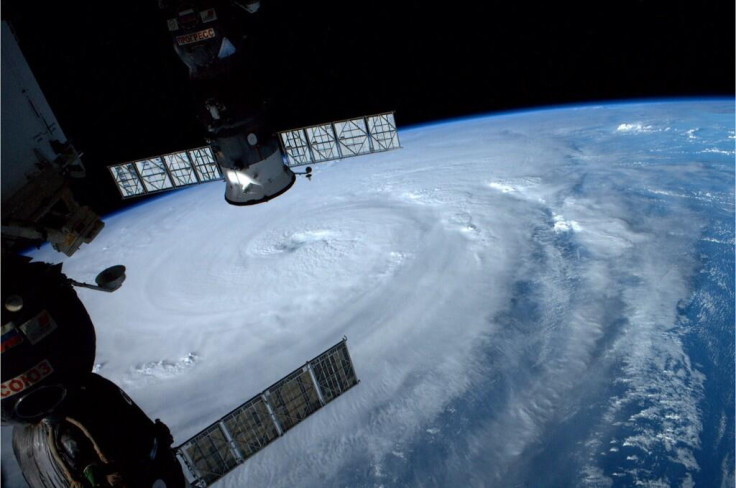Wind power on steroids: Typhoon turbines to provide the ultimate clean energy to Japan by 2020
One typhoon won't power Japan for 50 years, but a single wind turbine can provide up to 10kW.
In what could be the ultimate clean energy, Japan is set to start harnessing the energy of typhoons, with wind turbines that are able to withstand intense storms – and turn them into power.
Typhoon turbines, also known as the Magnus Vertical Axis Wind Turbine (VAWT), were first thought up by Atsushi Shimizu, chief executive of Challenergy Inc. After seeing the widespread destruction caused by the Fukushima nuclear disaster, he wanted to find a way to provide a safe and sustainable source of energy.
A spokesman for the company told IBTimes UK: "In Japan, there is a lot of potential in wind energy, but the energy composition of wind source is surprisingly low due to typhoons potentially breaking conventional wind turbines. Instead, he thought he would develop the new type of wind turbine which can convert the overwhelming energy of typhoon into the clean energy."
In 2014, Shimizu got the patent for the prototype Magnus VAWT, and the company believes energy generated by the typhoon turbines will be available by 2020 – in time for the 2020 Tokyo Olympics and Paralympics.
Magnus VAWT converts wind to energy in the same way as traditional wind turbines do – three rotating cylinder wings rotate the generator inside the centre pole. However, the speeds at which they can generate power are far, far higher.

"Our first field test unit placed in Okinawa since last August is designed to withstand in the maximum wind speed, 80 metres per second (179mph)," Shimizu told IBTimes UK. "It experienced two typhoons and safely continued its generation even in the maximum wind speed, 25 metres per second."
At present, a standard wind turbine in the UK would shut down once wind speeds reached 25 metres per second. An average, onshore turbine has a capacity of between 2.5-3MW. This provides enough energy to supply 1,500 homes with electricity for a year.
A single Magnus VAWT can currently generate 1kW of electricity output. Shimizu is currently working to scale this up to 10kW. "We just developed the first field test unit and successfully completed the first year of field test," he said. "That unit can only generate 1kW of electricity output. Based on our market research, we need to scale up this electricity output to at least 10kW, 10 times bigger than that of the test unit.
"We are now developing the detailed design of 10kW wind turbine and by 2020 Tokyo Olympics and Paralympics we are aiming to start the commercial operation and mass production of Magnus VAWT, first of a kind wind turbine in the world."
Exaggerated claims
Previous reports suggested that with the Magnus VAWT, a single typhoon could power Japan for 50 years. This is not the case, Shimizu explained: "They misunderstood the past estimation that theoretically one typhoon potentially has the amount of energy equivalent to the electricity consumption for 50 years in Japan. We don't think our turbine could power Japan for 50 years by just one typhoon.
"We are developing the turbine that can work with the rated output in the middle of a Typhoon. This means that our 10kW-rated turbine generates 10kW in the middle of a Typhoon. Japan has long cherished the sentiment of 'mottainai' (literally, 'don't waste what is valuable'). We can't use whole energy of a Typhoon, but we believe that we should try to use energy of a typhoon even just a little, with soul of 'mottainai'."
Future of typhoon power
Typhoons form over warm ocean water near the equator. The warm air rises up, leaving less near the surface. This creates an area of lower air pressure, and air with higher pressure nearby moves towards it. This new air also warms and starts to rise, creating a swirling movement. When the warm air starts to cool off, clouds form. A repeat of this process causes the whole system to grow and it starts to spin faster and faster – eventually turning into a typhoon.
Because of Japan's geographical location, typhoons are a regular occurrence. Around 30 typhoons form over the Northwest Pacific every year, of which seven or eight pass over Okinawa Prefecture – making it the ideal spot for the Magnus VAWT.
"Our first field test unit was in Okinawa Prefecture, the south islands of Japan, where so many typhoons hit every year," Shimizu said. "Okinawa is famous for its typhoon disasters in summer season, but the feature of our turbine is that we can continue the electric generation even during the strong wind condition such as typhoon."

Scientists have said the frequency of very intense typhoons will increase in the future because of climate change. A study published in Nature Geoscience last year showed global warming had tripled the number of super typhoons (Category 4 or 5) in East and Southeast Asia over the last 40 years. Findings indicate that warmer ocean surface temperatures were to blame.
Shimizu said they have already had interest from governments and companies in other parts of the work which are keen to utilise the technology. "From the beginning, our goal is to change the world with Magnus VAWT," he said. "In Japan, wind speed and direction are not stable, and it is getting easier to encounter extreme environments like typhoons. Traditional wind turbine cannot control itself under such condition. So far, strong winds have not been utilised – regardless of its potential energy.
"We think that this is not only the story of Japan, but the countries in East Asia such as China, Taiwan, Philippines and Vietnam, the countries in Pacific Ocean and Caribbean Sea."
Over the coming years, there are several obstacles that need to be overcome to make the typhoon turbines commercially available. The first is upscaling its electricity output. "Before the commercial operation in 2020, we plan to build the second field test unit with 10kW electricity output in the next year, 2018. Now we are looking for the field test site not only in Japan, but also all over the world," he said.
© Copyright IBTimes 2025. All rights reserved.






















